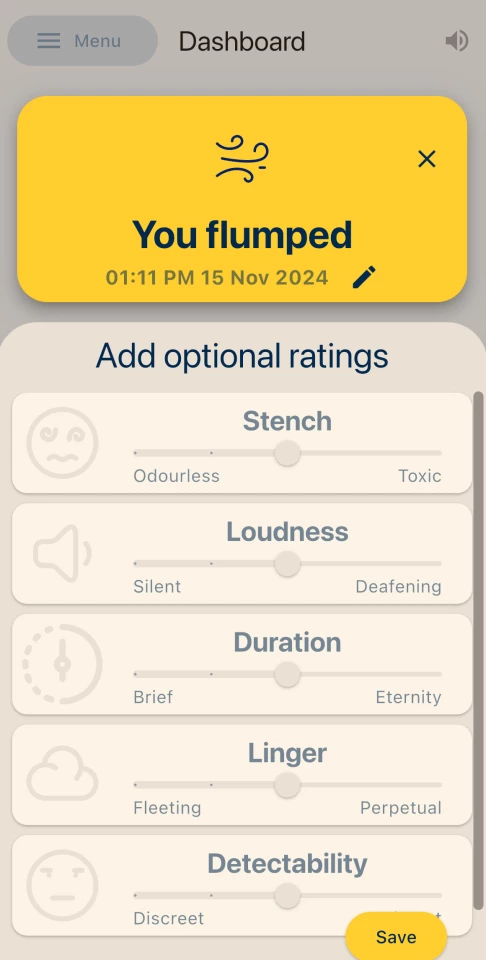In one of the most amusing citizen science projects we've ever come across, Australia's leading research agency the CSIRO is asking people across the nation to track their flatulence over three days through the free and purposely funny Chart Your Fart app.
While there's a serious side – helping scientists better understand gut health of people aged 14 and over across the nation – it's hard to stifle a giggle, with the app asking participants to record not just when they passed wind, but to rate the fart's characteristics: charting stench (from odorless to toxic), loudness (silent to deafening), duration (brief to eternity), how long the smell lingered (fleeting to perpetual) and its detectability (discreet to blatant).

“Passing wind is a natural occurrence and a sign that our digestive system is working as it should, to expel excess gas that is produced from breaking down and processing the food we eat,” said CSIRO Research Dietitian Megan Rebuli. “Talking about diet often leads into discussion about the other end of eating.
“Different foods, medical conditions, or even the way we chew, or swallow can have an impact on how our body processes the excess gas, leading to different smells, frequency or even volume," she added.
The hilarious project was born out of a 2021 gut health study that found that Aussies are punching above their weight when it comes to farting. Some 60% of those surveyed reported "excessive flatulence", with almost half of these people saying they experience this on "most days."
Age, sex and whether someone has changed their diet recently is also recorded, in order to gather more nuanced data on what's going on 'down there' Down Under. Anonymity is maintained via the app, with it assigning each participant a code – however, an email address is required.
“Research is only as good as the data we have, and we want to work with as much of our diverse Australian community as we can to drive innovation in health and wellbeing research and deliver meaningful outcomes,” said Project Lead and CSIRO Behavioural Scientist, Dr Emily Brindal. “We want to showcase the potential of public-led research and ask the community to come on board with shaping our future health and wellbeing science."
Naturally, as a huge fan of citizen science projects, I'll be doing my bit for research over the next three days. As of writing, I am so far underperforming somewhat. The US National Institute of Diabetes and Digestive and Kidney Diseases notes that studies have reported that people pass wind 8-14 times a day, but up to 25 times is what experts believe to still be "normal."
Knowing Aussies, and their ability to turn anything into a sport, there will undoubtedly be some who see Chart Your Fart as a competition. While the idea is not to mix up your habits for the three days of research, there are many things that influence the amount of gas the gut produces – including chewing gum, carbonated drinks, foods high in insoluble fiber, legumes and eating fast.
As for the smell-o-meter, cruciferous foods such as brocolli and cabbage, as well as eggs, grains, meat, beer and onion, are likely to blow up the "toxicity" scale.
Naturally, for such a funny topic, Chart Your Fart is also very amusing, providing users with more words for flatulence than we can come up with. (That must have been quite the brainstorming session at the CSIRO.)

“We rely on the public to share their experience with us for so much of our health and wellbeing research, but we also want to hear what research the community wants us to do – it is about keeping it real and relevant, but why not have some fun too?” Dr Brindal said.
Let's hope other countries follow suit – because, after all, it's a universal language. In the meantime, it's as good a time as any to roll out an old hit from the New Atlas team's most talented tooter, most gifted gas merchant, most fluent farter – Loz Bain. Enjoy.
Source: CSIRO







